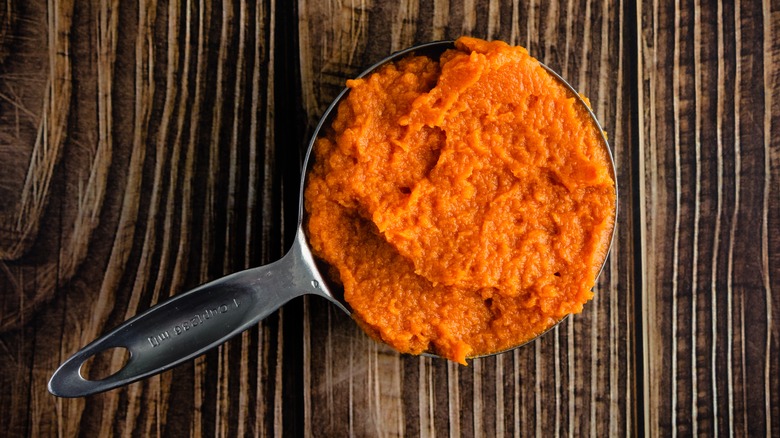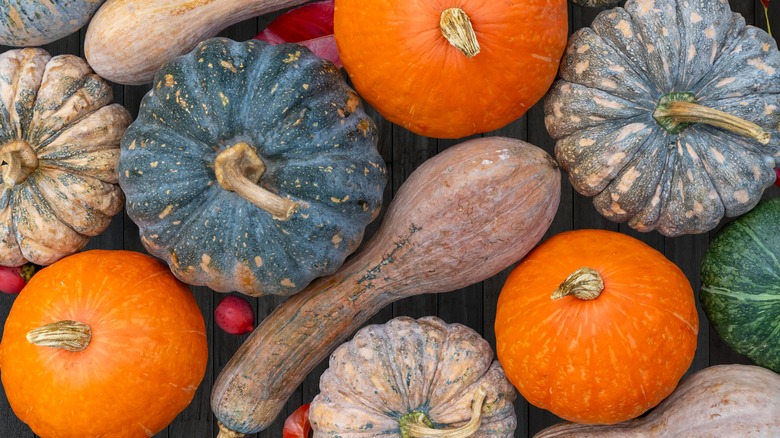Here's What Your Canned Pumpkin Puree Is Really Made From
Most people know that there is a big difference between a can of pumpkin puree and a can of pumpkin pie filling. In fact, most recipes for homemade pumpkin pie will warn you to not accidentally grab the latter, but make sure you're reaching for the former, the one made from 100% pumpkin. So, it might come as a major surprise to know that what you think is pure pumpkin might actually be made from squash.
Now, a pumpkin is, of course, a type of squash. However, those round, orange types that you find at "patches," carve faces into, and stack on your front porch (basically, the ones we obsess over every fall) are likely not going into cans of pumpkin puree. The canned pumpkin powerhouse, Libby's, primarily uses a variety of squash called Dickinson squash for its canned pumpkin. Other brands might include Boston marrow squash, Golden Delicious squash, and even butternut squash (check out 15 incredible squash recipes here if you're getting hungry).
So how are these companies able to claim that their products are "100% pumpkin?" There are a couple of factors at play here. The botanical name for pumpkin, cucurbita pepo, encompasses several types of squash, not just one varietal. The USDA also does not distinguish between what a pumpkin is versus a squash when it comes to canned pumpkin, only that a product called "canned pumpkin" must be made of pumpkin or squash. As you can see, there is a lot of room for interpretation here.
Why squash?
You could be wondering why big brands look to squash and not something like sugar pumpkins to create its canned, pureed pumpkin (sugar pumpkins are typically the kind recommended if you're making your own pumpkin puree from scratch). The answer is simply that certain squashes taste better than most pumpkins; they have better texture, higher sugar content, and less water than pumpkins, which makes them better for baking and cooking.
The aforementioned Dickinson squash has a tan-colored skin with a bright orange flesh which is on the drier side, making the resulting pulp creamy and not watery or stringy; in other words, it's perfect for a silky, smooth pumpkin pie.
Pumpkin pie filling, on the other hand, is a product made from pureed pumpkin (which is probably squash), sugar, spices, and other ingredients. It's generally not considered as desirable as pure pumpkin for using in homemade pumpkin pies, but can be used in other sweet pumpkin desserts if you're looking for a shortcut. However, in this perfect pumpkin foam recipe, you'll want to use the pure stuff.

